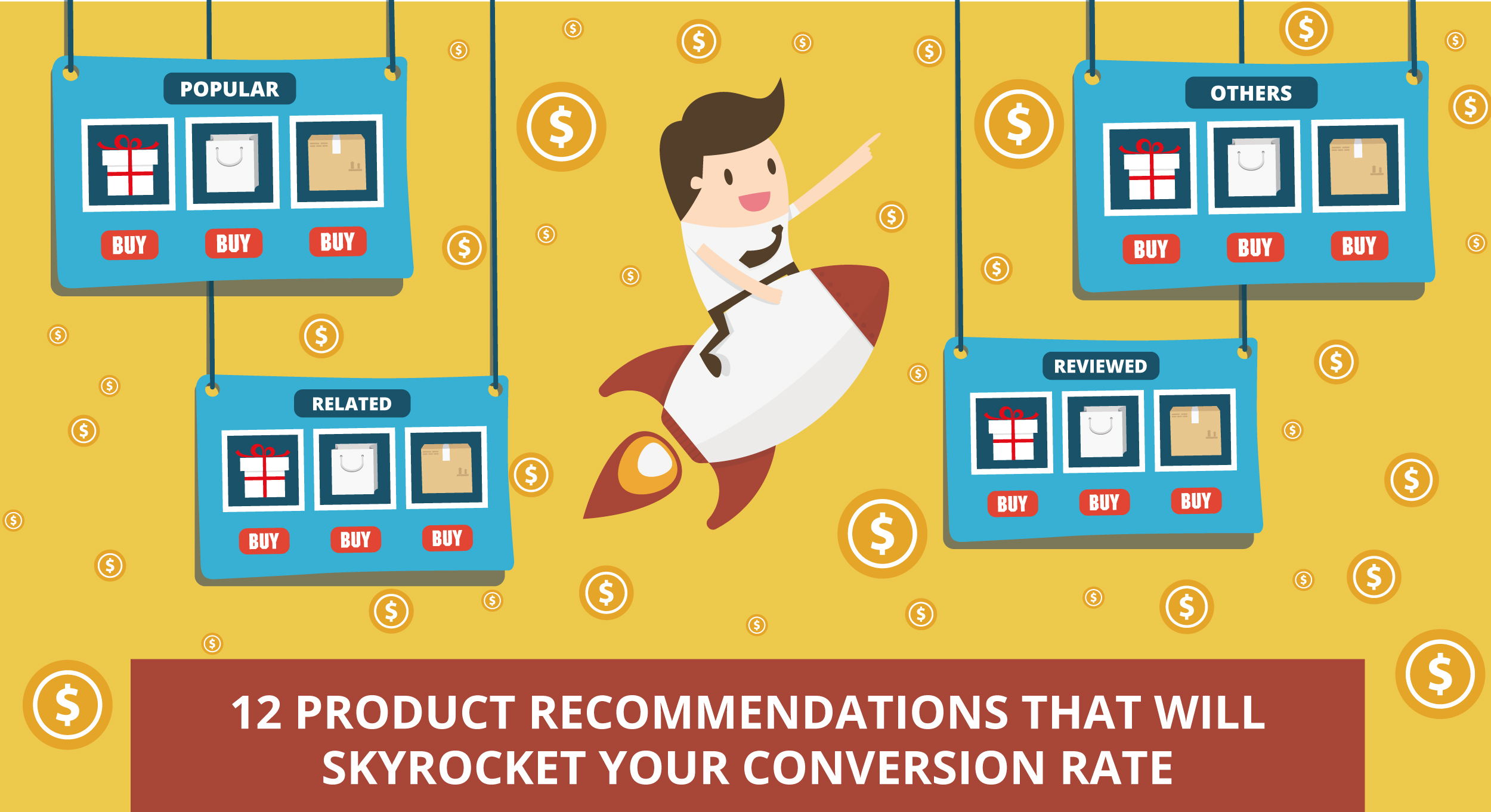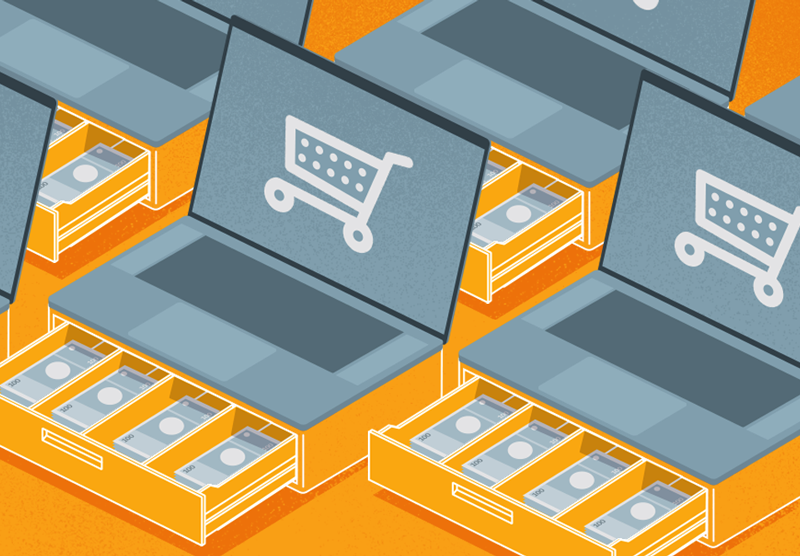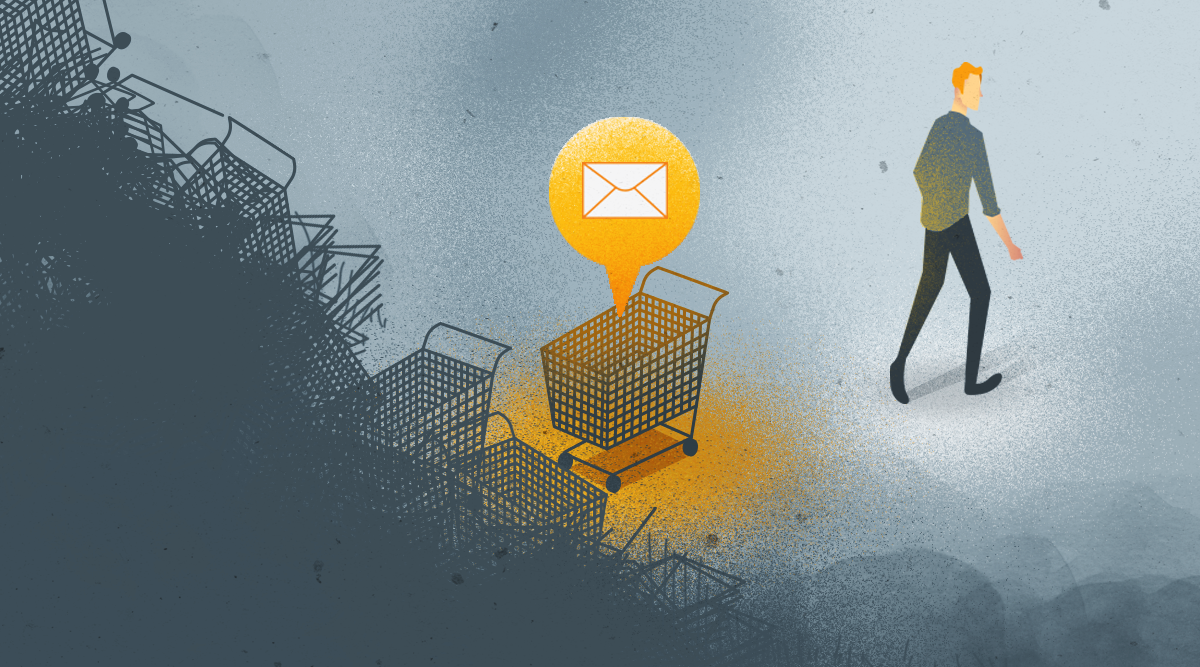If you’ve ever shopped online, you would’ve noticed that nearly every store you visited used some sort of product recommendation widget.
They significantly help boost sales revenue, click-through rate, conversion rate and other important metrics.
Don’t take my word for it, though. Let the statistics from these professional eCommerce consultants speak the truth:
- A study of over 100 ecommerce stores showed that product recommendations in the checkout page resulted in a 915% increase in conversion rate
- A study of 300 ecommerce sites indicated that up to 31% of ecommerce revenue were generated from personalized product recommendations during Q4 2018, and the worldwide average of the same was 12%. Users that clicked on the recommendations convert at 5.5% higher conversion rate
- Forrester and Gartner’s study showed that personalized product recommendations can increase revenue by up to 300%, conversion rate by 150% and average order value by 50%
We can also learn from Amazon, the biggest, if not one of the biggest online retailers in the world. 70% of their homepage are product recommendations.

Their product recommendation engine is super advanced. If it’s your first time visiting their site, they will show product recommendations along the lines of: “What other customers are looking at right now” and “Best sellers”.
However, if you visit a second time, their engine will display personalized product recommendations based on your previous browsing history.
Remember previously how personalized product recommendations can increase revenue by up to 300%? No wonder Amazon are crazy about product recommendations.
Overall, product recommendations are a super effective tactic to increase your sales further.
Let’s look at some types of product recommendations we can use for our ecommerce store.
Types of Product Recommendations
1. Featured products
Typically used on the homepage, featured products give visitors an overall idea of the type of products and brands available on your site.
First impression matter so this is your most valuable weapon in capturing their interest and convincing them to stay – so select your products carefully!
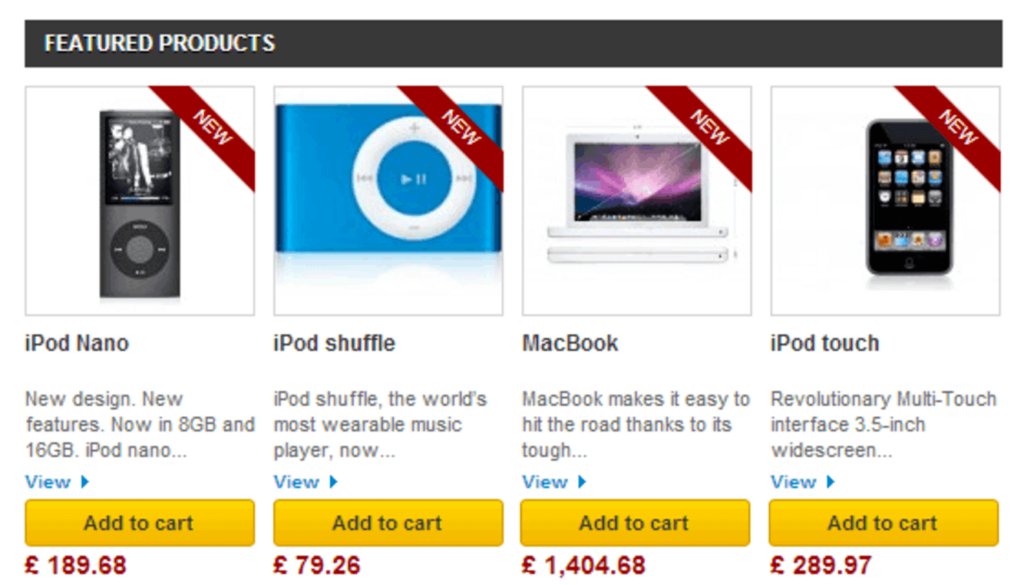
2. Popular products
Ever heard of the Pareto principle where 80% of your sales comes from 20% of your products?
The 20% are your core products and typically are your most popular products/best sellers.
Typically determined by the number of times it has been purchased (adjusted with how long it’s been available). Some systems will go even further by incorporating other data such clicks, views, add-to-cart, etc.
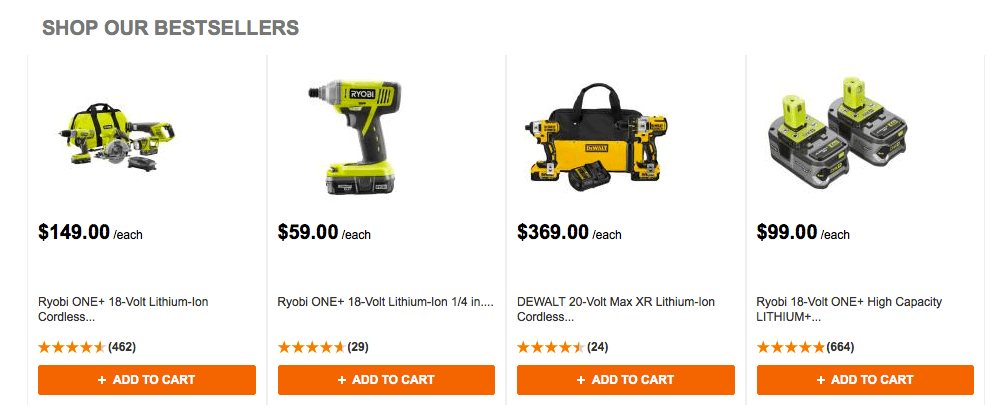
You can take it further by recommending the top sellers of a specific brand. If you’re looking to buy a Ben Sherman shirt at John Lewis, they will provide the top sellers for within the brand: Ben Sherman.

Another way you can use this method is showing the season’s best sellers like Fredricks. This is typically used by fashion ecommerce stores as clothing is seasonal, unlike electronics.
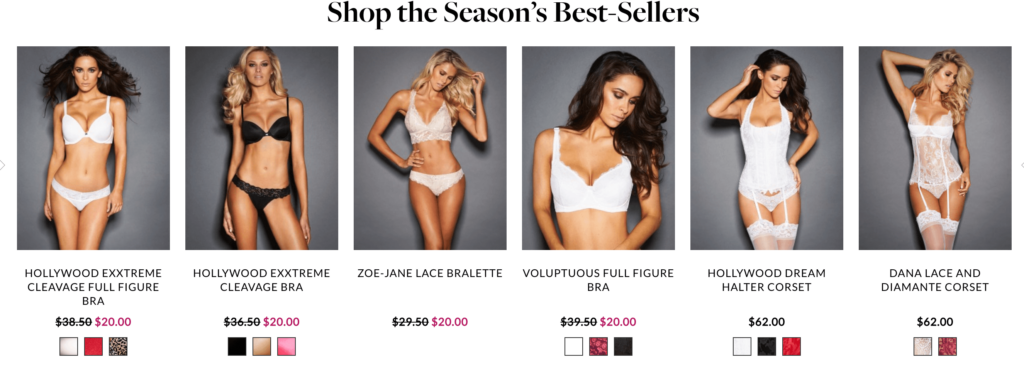
3. Special deals
Another popular method is displaying products with a limited time offer, usually discounted or at a special price.
Who can resist a bargain?
Putting your best-priced products in front of your customer will skyrocket your sales, especially if it’s at a very attractive price.
Here are Noel Leeming’s deals for anyone interested in purchasing a TV. Note how they show the date when the deal will finish. This helps create a sense of urgency, encouraging visitors to purchase before it ends.
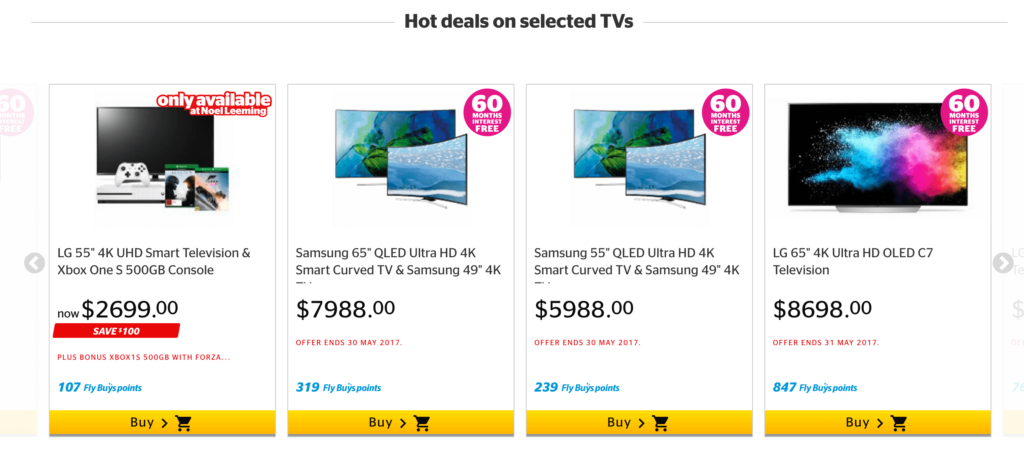
You can even use daily deals recommendations like Action Village. They even included the hours and seconds till when it ends. A great use of creating a sense of urgency.
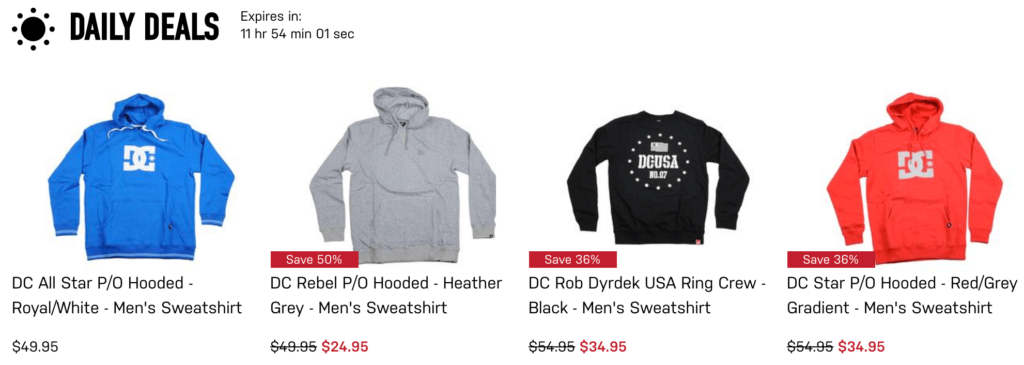
4. Personalized recommendations
Popular product recommendation caters for the masses whereas personalized recommendations are unique and different, and cater for each individual.
One the benefits of personalized product recommendations are that we can increase the sales of more “unique” and “uncommon” items you have in stock.
Barnes and Noble opt for the “Recommended for you” product recommendation tactic. By using the word “you”, it creates more of a personal touch to the user.
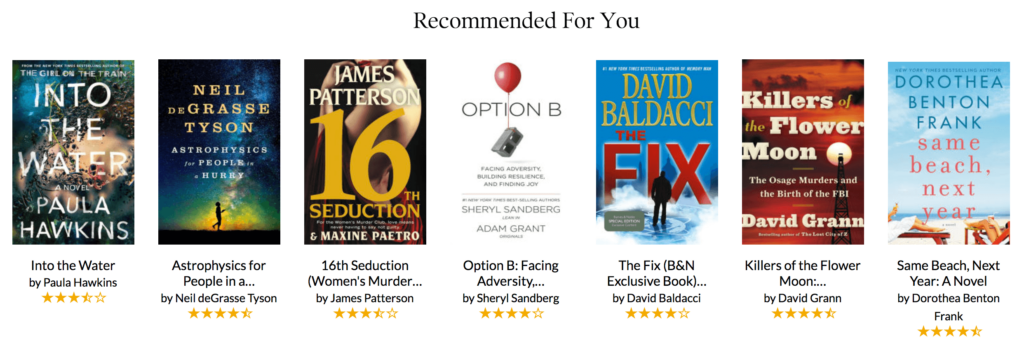
Personalized recommendation algorithms are more advance as there are more variables to take into account. Sometimes it’s a hit, but sometimes they’re a miss – as they say, “the devil is in the details”.
For example, it was my first time visiting the Barnes and Noble website and they “somehow” knew what books I liked.
On the product page, you can draw your customer’s attention to products relevant to them with words like “You might also like” or “You may also be interested in”.
Here’s Asos using this tactic:
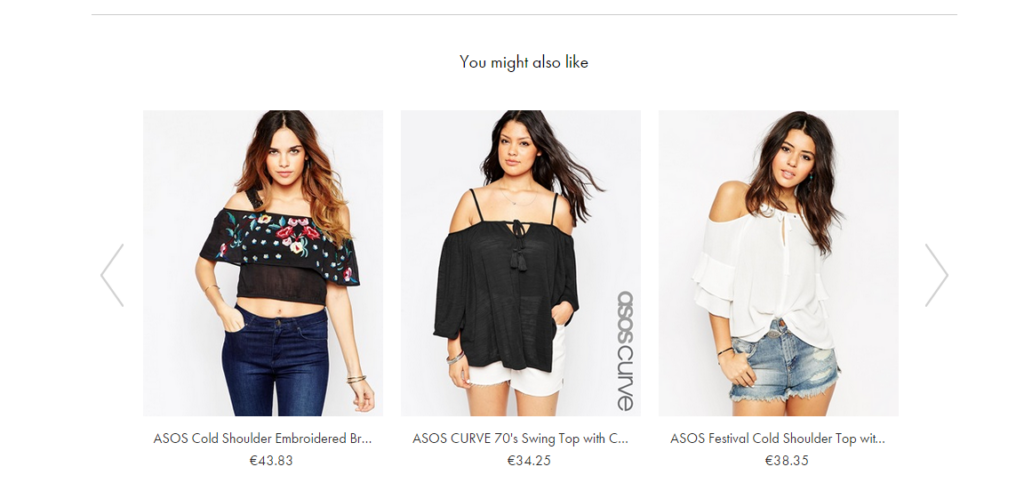
5. Related products
This is where you recommend similar products without any customization – based on the product and not to the user.
Newegg has a great example of this with other TV recommendations when you’re looking to purchase a TV:
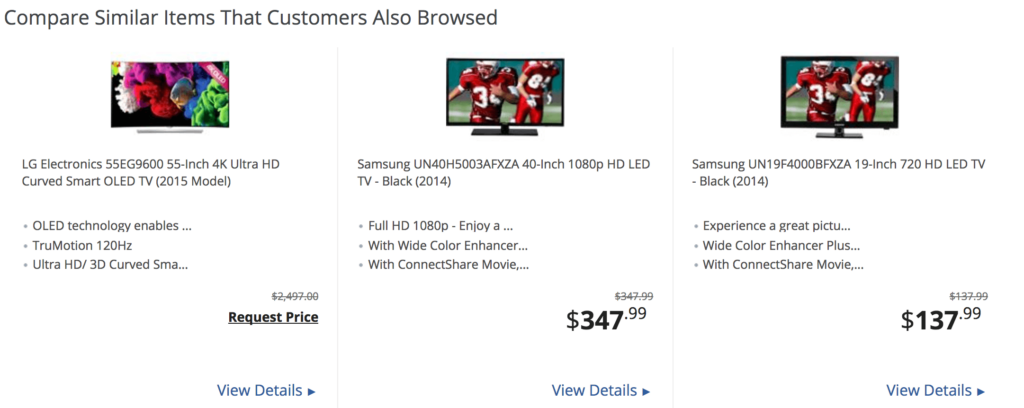
6. Recommendations by other customers
We as humans are heavily influenced by our peers.
For example, you and your friends go out for lunch. You feel like pumpkin soup but everyone else in the group are going to order a turkey sandwich. You don’t wanna feel left out and decide to go with the turkey sandwich like everyone else.
Does this situation sound familiar?
We can influence and subconsciously encourage visitors to purchase a recommended product based on what other visitors have viewed/bought.
Here’s Dockers using the “Customers also viewed” method:
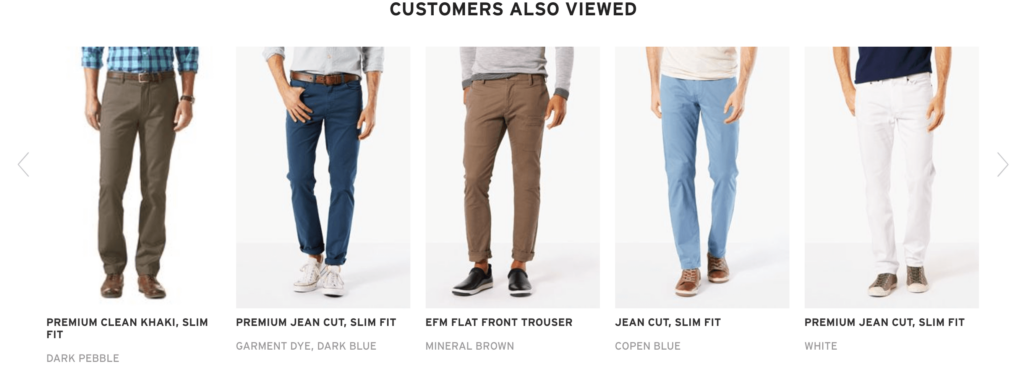
If a customer is still undecided, Evo helps them out by recommending products that “customers also considered”.

7. Reviewed products
As mentioned before, visitors are heavily influenced by what others have to say.
Another method to capitalize on this is to recommend products reviewed by other customers. This can be very persuasive as buyers trust other buyers reviews as these are less biased than the seller’s description.
There are many ways you can recommend products via this tactic:
- Show your top reviewed products
- Show the latest reviewed products
- Show best relevant reviews in your category and product pages
Zappos goes for the “latest reviewed products” on their homepage:
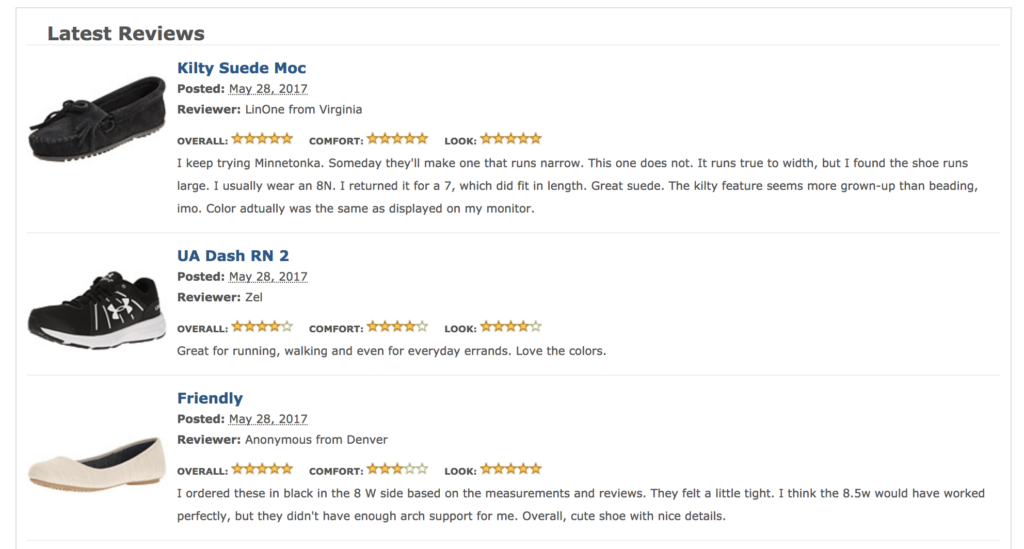
Hayneedle showcases products with relevant reviews on the category page.

8. New arrivals
Showing your newest products are a great way of letting your visitors know what new gear you have. It can also help your regular customers skip the search and jump straight to the newest items.
Here’s an example by Sportsman’s Guide:
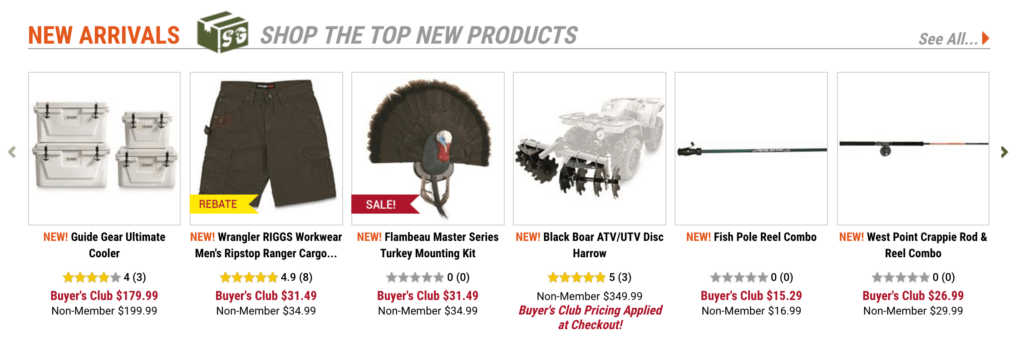
9. Recommendations in the shopping cart
This is another effective way to boost your average order quantities.
Study shows that recommending products in a user’s shopping cart were among the top 10 best recommendation types based on revenue generation.
The reason for this is that when visitors add a product to their cart, they most likely are in a psychological state of “shopping mode”, where they are susceptible to saying “yes” to further offers.
It’s like going to a electronics store and you buy a really expensive camera. The seller recommends you other products to go along with it: Camera bag, screen protector, memory card, etc. You basically say, “yes, yes, yes!”
Here are some popular product recommendations that are often used by ecommerce stores:
- Frequently bought together
- Customers also bought
- You may also like
Pfaltzgraff opts for the “you may also like” tactic:
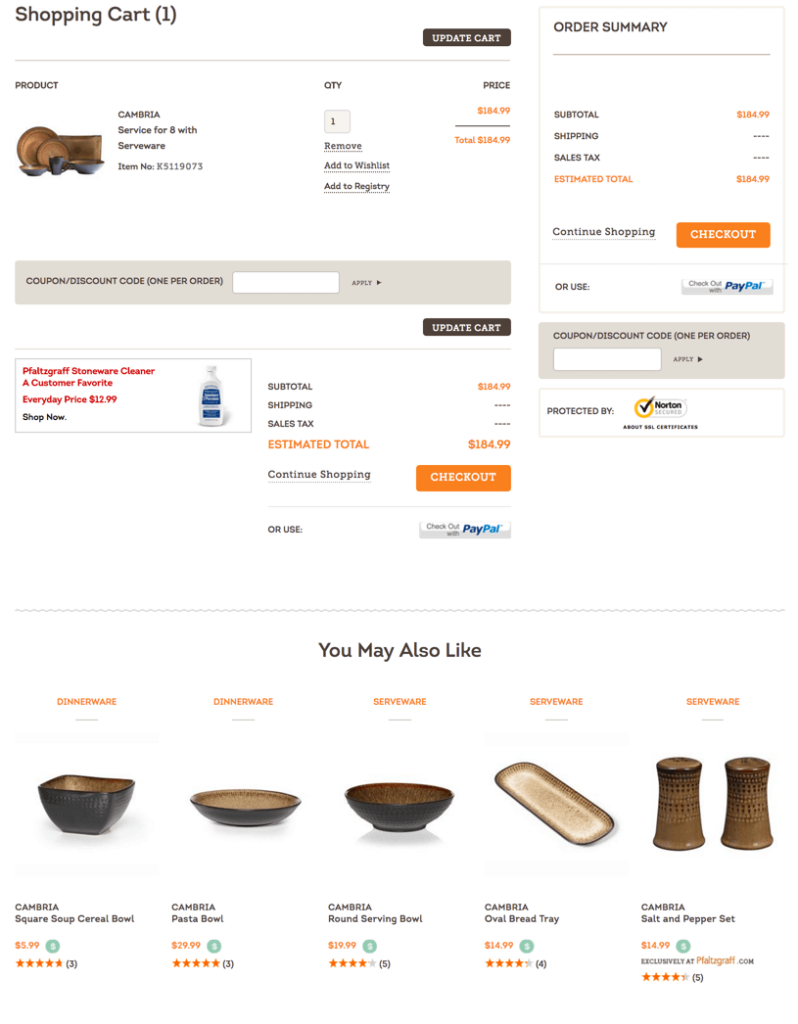
10. Complementary products
This tactic is great for getting more out of your order size. By showing customers products that compliment the original product, you can further increase your order value by making them buy more.
This is typically ideal for fashion and electronic stores as their products are often complimentary to one and another.
You may often have seen this when browsing on Amazon with their “frequently bought together” product recommendation:
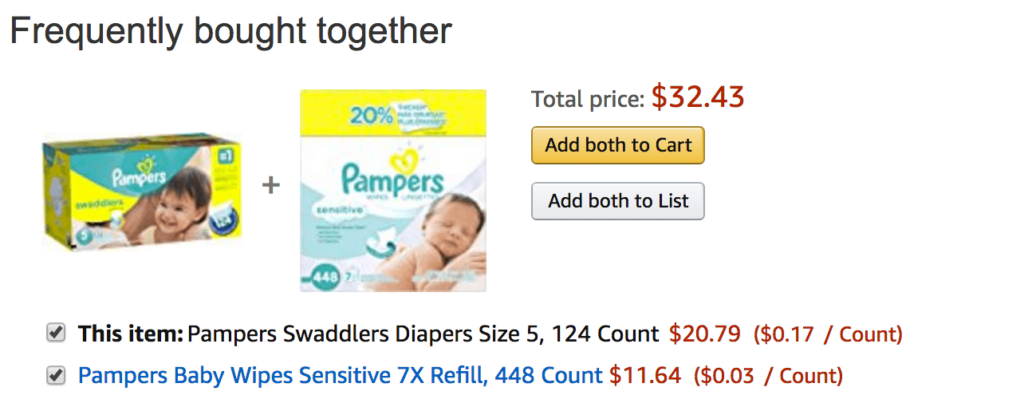
Stella McCartney recommends other products that will “complete the look” in addition to the original product you were viewing. A really good tactic as they know that fashionistas are really conscious of their appearance and will go to great lengths to look fabulous.
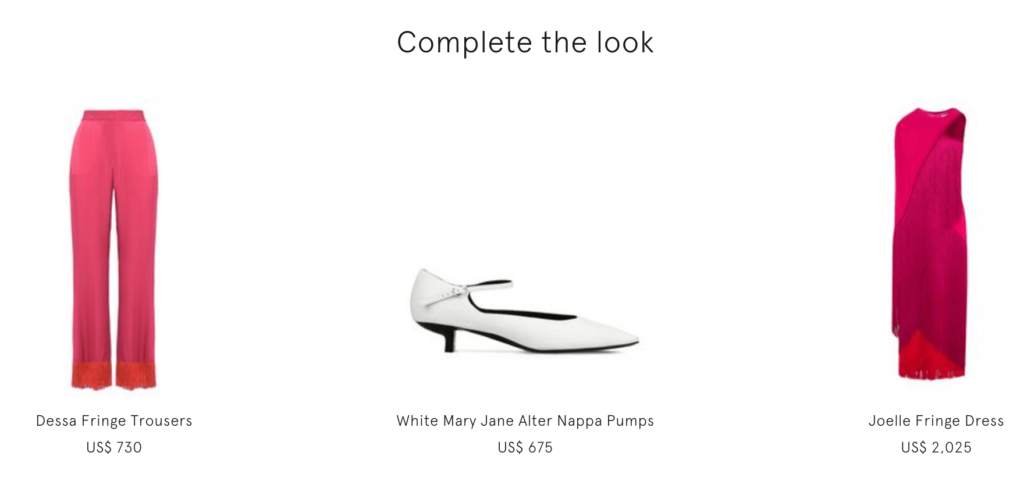
11. Recently viewed
On product pages and during checkout, you can use browsing history to show visitors recently reviewed products. This is a great way to get visitors to revisit past products or to remind them of an accessory they forgot to add.
Use this wisely as you do not want to take your visitors backward in the purchase process. If using this in the checkout, limit the recommend products to accessories only.
Here is Hayneedle’s use of this method:
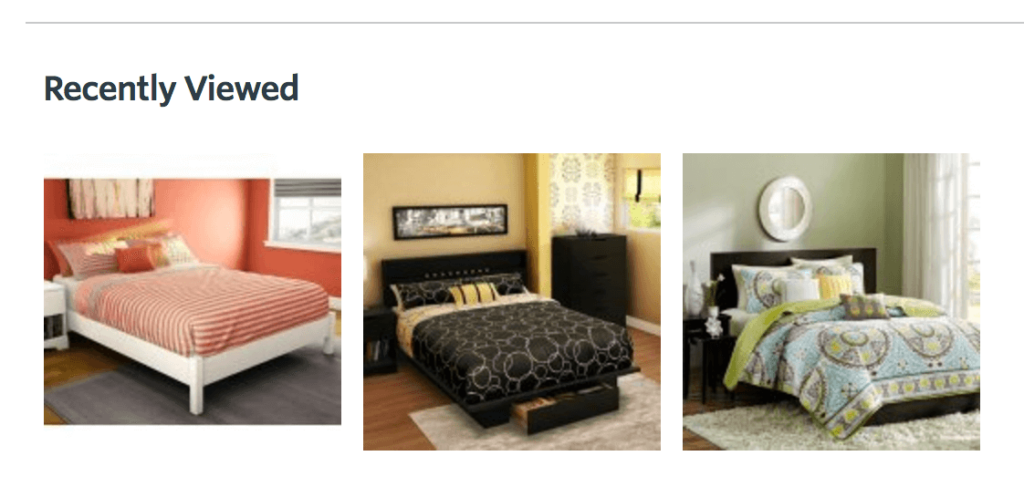
12. Zero results and 404 pages
Whenever we are shopping online, we have a product in our mind that we want to buy. To skip navigating the category pages, we go straight to the search bar and type our product in.
“Zero results”
“Oh, I guess they don’t have it. Let me check another website”
This is what our customers are thinking when they land on a zero page or a 404 page, and results in them leaving our store – a loss in potential sales.
Since zero pages and 404 pages have one of the highest exit rates, we can insert product recommendations (and also personalized recommendations) to these pages to get customers to continue browsing.
Stella McCartney has a great example of this:
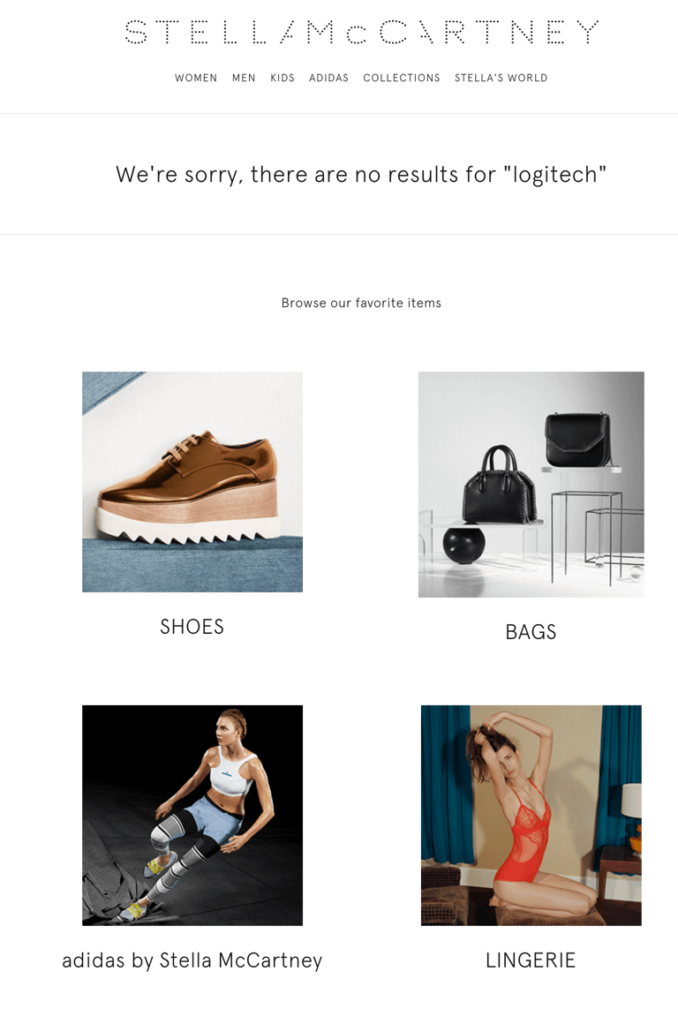
Summary
Don’t miss out on potential lost revenue. If you haven’t started implementing product recommendations to your ecommerce store, now is a great time to start by trying out these 12 types of product recommendations.
Although this isn’t every type of product recommendation out there, they are a good starting point for giving you an idea what to incorporate to your store.
Choose carefully the type of recommendation you want to implement as it depends highly on your brand and product. The key is not to overwhelm visitors but to provide helpful suggestions to their buying decision.

